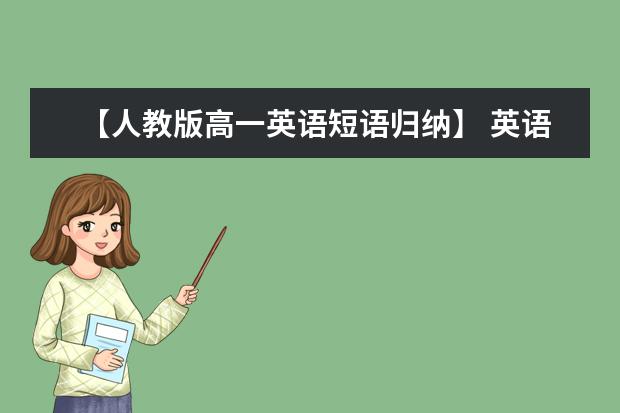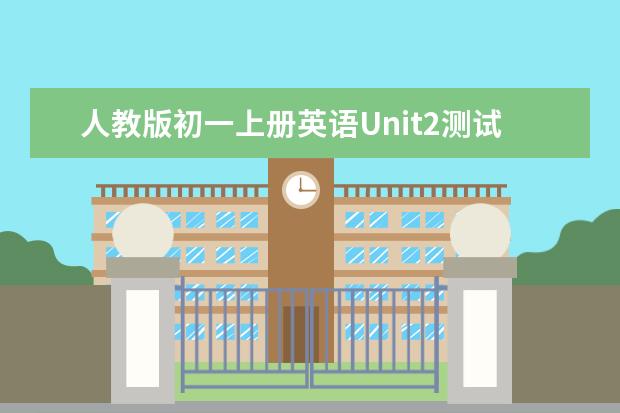今天蜕变学习网小编整理了初一英语语法,人教版初一英语语法大全相关信息,希望在这方面能够更好的帮助到考生及家长。
今天,专注教育小编为大家整理了初一英语语法知识总结,希望同学们可以收藏起来,提前预习,一步领先,步步领先!
初一英语语语法之一. 情态动词can的用法
can+动词原形,它不随主语的人称和数而变化。
1. 含有can的肯定句:主语+can+谓语动词的原形+其他。
2. 含有can的否定句:主语+can't+动词的原形+其他。
3. 变一般疑问句时,把can提前:Can+主语+动词原形+其他? 肯定回答:Yes,主语+can。否定回答:No,主语+can't.
4. 含有can的特殊疑问句:特殊疑问词+can+主语+动词原形+其他?
I can speak English.→I can't speak English.→Can you speak English? →What can you speak?
初一英语语语法之二. what time和when引导的特殊疑问句
1. 询问钟点时用what time,询问日期、月份、年份时用when。
2. What's the time?=What time is it?现在几点了?
3. 时刻表达法:顺读法和逆读法。
顺读法:“钟点+分钟”直接读数字。
如:7: 05 seven five;8:16 eight sixteen
逆读法:借助介词past或to表示,要先说分再说钟点。
a. 当分钟不超过30分钟时(包括30分钟),即
如:1:25twenty-five past one
b. 当超过30分钟时,即>30,用to表示。其结构为:“所差分钟(即60—所过分钟数)+to+下一个整点”,to译成“差”,差几分钟到几点。
如:4:38 twenty-two to five
c. 当分钟为30分钟用half表示,当分钟为15分钟用a quarter。
初一英语语语法之三. how引导的特殊疑问句
1. how 引导的特殊疑问句提问交通方式,其答语分三种情况:
a. take a/an/the+交通工具(单数)
b. by+交通工具(单数)
c. on/in+限定词+交通工具
---How do you go to school every day?
---I take a bus to go to school every day./I go to school by bus every day./I go to school on the bus every day.
2. how far 用来提问距离,多远,其答语分为两种:
(1)用长度单位表示:It is five kilometers.
(2)用时间表示:It’s twenty minutes’walk.
3. how long 用来提问时间,意为多久回答常用“for+段时”。
----How long have you learnt English?
----For 3 years.
4. how soon 用来提问做完某事还需要多长时间, 用于将来时态, 常用“in+时间段”来回答。
----How soon will you arrive in Beijing? ----In 3 hours.
初一英语语语法之四.祈使句
祈使句一般表示请求、命令、劝说、号召、警告等。一般以动词原形开头,句末可以用感叹号或句号。
1. 肯定的祈使句:
(1) 实义动词原形+其他 :Please look at that boy.
(2) be动词原形+形容词+其他:Be quiet, please.
2. 否定的祈使句:
(1) Don’t+实义动词+原形 Don't stand there.
(2) Don’t be+形容词+其他Don't be so noisy.
(4) No+n./V-ing
No photos.不许照相。
No talking. 不许谈话。
初一英语语语法之五. 现在进行时
现在进行时指当前时间正在发生的动作。常与now,at this moment,listen,look等词连用。
1. 现在进行时的基本结构
肯定式:am/is/are+doing(现在分词)
否定式:am/is/are not +doing(现在分词)
一般疑问式:Am/Is/Are + 主语 +doing(现在分词)+ 其他
特殊疑问式:特殊疑问词+一般疑问式
They’re having a meeting now.他们现在正在开会。
They aren't having a meeting now.他们现在没有在开会。
Are they having a meeting now?他们现在正在开会吗?
What are they doing now?他们现在正在做什么?
2. 现在进行时的基本用法
(1)表示此时此刻正在发生的事情。常与now,at the moment,look,listen等词连用。
The little boy is watching TV now.这个小男孩现在正在看电视。
Listen!She is playing the guitar in the next room.听!她正在隔壁房间弹吉他。
(2)表示现阶段一直在进行着或是重复发生着的动作,不强调此时此刻正在做。常与表示时间段的时间状语连用。
I am studying computer this term.这个学期我一直在学习计算机。
(3)表示说话人褒义或贬义的情感色彩,如赞许、批评、喜欢、厌恶等。此时常与alway、often等频度副词连用。
He is always thinking of others , not of himself.他总是为他人着想,而不为自己。(表示赞许)
One of my roommates is often leaving things about.我的一个室友经常乱扔东西。(表示不满)
(4)表示在近期按计划或安排要发生的动作。(现在进行时表示一般将来的含义。)
① 瞬时动词的进行时在任何情况下都表示将来含义。这些动词包括go , come , leave,arrive , return等。
I am leaving.
我将要离开了。
I am leaving tomorrow.
我将会明天离开。
② 持续动词的进行时,只有在有将来时间状语或将来语境的情况下才可以表示将来含义。
An American professor is giving a lecture this afternoon.
今天下午一位美国教授将要作报告。(将来含义)
An American professor is giving a lecture.
一个美国教授正在作报告。(进行含义)
3. 现在分词(doing)的变化规则
(1)一般在情况下,在动词词尾加-ing。
go——going
play——playing
know——knowing
(2)以不发音的字母e结尾动词,先去e再加-ing。
make——making
arrive——arriving
come——coming
(3)以重读闭音节结尾,且动词词尾只有一个辅音字母时,先双写这个辅音字母,再加-ing。
run——running
stop——stopping
swim——swimming
run——running
put——putting
sit——sitting
begin——beginning
plan——planning
cut——cutting
get——getting
shop——shopping
chat——chatting
regret——regretting
dig——digging
(4)以-ie结尾,先将-ie改成y,再加-ing。
tie——tying
die——dying
lie——lying
初一英语语语法之六. There be结构
1. There be句型主要用以表达“某处有某人(某物),强调存在”其基本结构为“There be+某物(某人)+某地”,有时为了强调地点,也可把地点状语放在句首。
There is a book on the desk.
On the desk there is a book.
(1)肯定句:“There be+主语(某人/某物)+介词短语”
There are three people in my family.我家有三口人。
There is a pen and two books on the desk.书桌上有一支钢笔和两本书。
(2)否定式:“There be +not+主语+介词短语”
There isn’t a boy in the room.房间里没有一个男孩。
There aren’t any books on the desk.书桌上没有书。
注意:“There be句型”的否定式的构成和含有be动词的其他句型一样,在be后加not或no即可。
注意not和no的不同:not是副词,no为形容词,所以not a/an/any+n,相当于no+n。
There aren’t any pictures on the wall.
=There are no pictures on the wall.
There isn’t a bike behind the tree.
=There is no bike behind the tree.
(3)疑问式:Be there+主语+介词短语?”
肯定回答是:“Yes, there be.”否定回答是:“No, there+be与not的缩写形式”。
—Is there a lamp in your bedroom?在你的卧室里有台灯吗?
—Yes, there is.是的,有。
—Are there any clock in the living room?客厅里有钟吗?
—No, there aren’t.不,没有。
(4)特殊疑问句:一般有两种句型结构
How many+复数名词+are/were there+介词短语?
There’re many children in the park.
How many children are there in the park?
How much+不可数名词+is/was there+介词短语?
There was little rain around the year.
How much rain was there around the year?
2. have表示“某人拥有某人或某物,强调拥有和所属关系”。
The man has two cars.
3. There be句型中的就近原则,即be和距其最近的主语保持一致。
There are some pens and a book on the floor. =There is a book and some pears on the floor.
初一英语语语法之七. 选择疑问句
选择疑问句是指说话人提出两种或以上的情况,让对方选择是哪一种,两个选择部分用or连接。选择疑问句不用yes或no来回答,直接在两个选择里选一个回答。
---Is she tall or short?---She is tall.
---Can you play the piano or play the guitar?---I can play the piano
初一英语语语法之八.名词
1. 名词单数变复数规则
在英语里面,名词分可数名词(countable noun)和不可数名词(uncountable noun)。不可数名词没有单复数之分,用时只当单数词用;可数名词有单复数之分,一个的前面要用a或an,eg: a pencil, a basketball, a dictionary, an egg, an ID card,而复数即两个或两个以上的要作相应的变化,情况如下:
(1)一般的词在单数词后直接+“s”
book→books,pen→pens,car→cars,map→maps,cartoon→cartoons
(2)以s,x,sh,ch结尾的词+“es”
box→boxes,watch→watches
(3)以辅音字母+y结尾的名词去掉“y”,改成“i”,再加“es”
family→families,comedy→comedies
(4)以f或fe结尾的词,先去掉f或fe,改成“v”再加es
knife→knives,wife→wives,handkerchief→handkerchieves
(5) 特殊词,特殊变化,需单独记:
child→children,man→men,foot→feet,woman→women
tooth→teeth,sheep→sheep,deer→deer
2. 既是可数名词又是不可数名词的单词
chicken当“鸡肉”讲时是不可数,当“小鸡”讲时可数;
room当“空间”讲时不可数,当“房间”讲时可数;
fish当食物用“鱼、鱼肉”讲时不可数,当“鱼的种类”讲时可数;
hair泛指“毛发”时不可数,当“一根或几根毛发”讲时可数;
sound意思是“一般性的声音”时,不可数,指“一次发出的声音”时可数;
paper当“纸”讲时不可数,当“试卷”、“论文”、“证件”讲时可数;
time当“时间”讲时不可数,当“时代、倍数、次数”讲时可数;
exercise泛指“锻炼”时不可数,当“练习、做操”讲时可数
初一英语语语法之九. 一般过去时
一般过去时表示在过去某个时间所发生的动作或所处的状态(与现在无关)。常与yesterday, last week, in 1989, just now, a moment ago, the other day等过去具体时间状语连用。
He was here just now.
他刚才还在这里。
What did you do yesterday?
你昨天做了什么事?
一般过去时基本结构
1. 肯定句形式:主语+动词过去式+其他
I was an English teacher one year ago.
一年前我是一名英语老师。
I bought a yellow dress yesterday afternoon.
昨天下午我*了一条黄裙子。
2. 否定句形式:①was/were+not;②在行为动词前加didn't,同时还原行为动词
I wasn't an English teacher one year ago.
一年前我不是一名英语老师。
I didn't buy a yellow dress yesterday afternoon.
昨天下午我没*一条黄裙子。
3. 一般疑问句:①was/were提到句首; ②Did+主语+动词原形+其他?
Were you an English teacher one year ago?
一年前你是一名英语老师吗?
Did you buy a yellow dress yesterday afternoon?
昨天下午你*了一条黄裙子吗?
4. 特殊疑问句:特殊疑问词+一般疑问句
What were you one year ago?
一年前你是做什么的?
学好英语,一定要多听,多读,多写,多做。多听,练习听力,纠正发音,锻炼大脑对英语词汇的敏感度。多读,增强语感,扩词汇量。多写,记忆单词是学好英语的基础。多做,掌握的知识点要多做练习,巩固记忆。熟能生巧。
专注教育专注中小学一对一补课,全国领先的一对一补习平台,诚聘全国各地重点学校名师,孩子成绩不理想,随时欢迎咨询。
以上,就是蜕变学习网小编给大家带来的初一英语语法,人教版初一英语语法大全全部内容,希望对大家有所帮助!
免责声明:文章内容来自网络,如有侵权请及时联系删除。
本文标题:初一英语语法,人教版初一英语语法大全
wap地址: https://m.tbqqq.com/zixun/12235.html
上一篇:遇极端恶劣天气学校可按指令停课

















